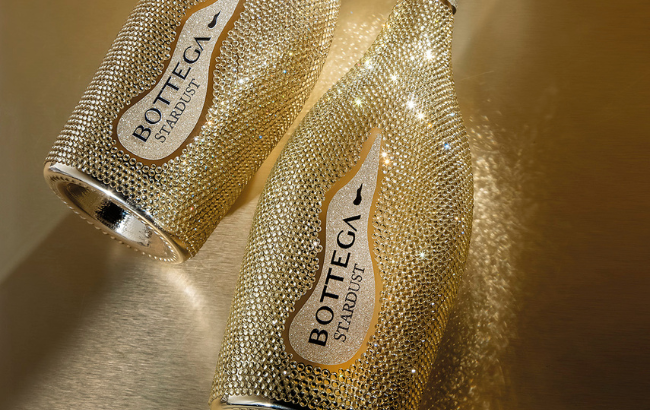db Reader: The lower alcohol wine you should be drinking
Elvira Dmitrieva, the chief executive of boutique merchant Independent Wine, reveals the lower alcohol wines that you should be stocking up on.
Step aside, blockbusting Aussie Shiraz – lower alcohol wine has never been more popular. The trend has been gaining steam for a few years now, with more people choosing wines that are lower in alcohol but high in flavour.
We’ve had a lot of requests for recommendations on wines with less alcohol. We spoke to a wine merchant specialising in boutique Italian wine, and they gave quite a few recommendations. Since there are some seriously fantastic Italian wines ranging from 5% to 13.5% ABV, we wanted to share our top picks with you. We’ve also included a simple explanation of what makes wine lower, medium-low and medium alcohol and how to choose a bottle that suits your tastes.
If you’re looking for something easy to drink with your afternoon barbecue or a lighter option to pair with midweek dinners, read on for our guide to lower alcohol wine.
Where does alcohol in wine come from?
Let’s start with a quick science lesson about what influences the alcohol level in wine. During fermentation, yeast transforms the natural sugar in the grape juice into alcohol and CO2. The yeast works either until all of the sugar has been converted into alcohol, until the wine has become too alcoholic for the yeast to survive, or until the winemaker steps in and filters out the yeast to stop fermentation early.
The sweeter the grapes, the more potential alcohol in the wine. Sunshine and warm temperatures play a huge role in the ripening process, which is why wines from scorching regions like Australia’s Barossa Valley often have a high level of alcohol, while wines from cooler areas like Germany’s Mosel Valley are quite low in alcohol. It also depends on which grapes are used, and what style of wine the producer is trying to make.
Light and sweet – lower alcohol wine crafted in warm countries
When you find a wine with less than 10% alcohol, it’s likely that it’s going to taste sweet. That’s because the wine-maker stops fermentation early, leaving some of the grape’s natural sugar in the wine. It’s something nice to think about as you sip your 5.5% sparkling Moscato (Muscat) – that sugary sensation comes straight from the sun shining on the vineyards of Asti.
Another thing to consider is that many lower alcohol wines are light-bodied, because alcohol contributes to the way you perceive the wine’s weight. While those powerful 18% wines from Australia and California often have an almost creamy texture, wines below 10% are generally more watery. This makes them delightfully refreshing, especially when served chilled.
Our favourite lower alcohol Italian wines include:
5% Francone Antichi Poderi dei Gallina | Sparkling Muscat | Moscato d’Asti DOCG £14.87
5.5% Volo Di Farfalle 2019 | Moscato d’Asti DOCG | Muscat Sparkling Wine £15.41
Cool-climate delights: medium to lower alcohol wine
We’ve already explained that sugar is the key to high alcohol wines – that’s why so many heavy-hitters come from places where strong sunshine and high temperatures help the grapes reach maximum sugar ripeness. So if you’re looking for wines that are naturally lower in alcohol, it’s best to cast your eye towards cooler climates.
Because there’s less natural sugar in grapes grown in cooler regions, there’s less sugar for the yeast to convert into alcohol. Generally speaking, cool climate wines will be lower in alcohol but still have the sharp, dry taste that a lot of wine lovers prefer.
In Europe, this means looking for wines that come from northern countries such as France – the Loire Valley, Champagne and Burgundy are popular examples. Of course, Southern European countries also have cool climate regions, especially near mountain ranges and large bodies of water. These geographical features have a natural cooling effect.
In Italy you’ll find excellent examples of cool climate wines from Alto Adige, in the foothills of the Alps, and Veneto – which sits in the shadow of the Alps on the North and Lake Garda, with its cold waters, on the East. In Northern Portugal and the Basque Country in Spain, the Atlantic Ocean brings wet and cold winds which help to produce refreshing lower alcohol wines. Some notable examples are Portuguese Vinho Verde, Spanish Albariño and Txakolina.
For an even lower alcohol content, look for off-dry styles from cool-climate regions. Fermentation needs to be stopped a lot earlier to hold onto a bit of residual sugar. Some of the best off-dry medium-low alcohol wines come from Germany – look out for Kabinett and Spätlese Rieslings which come in around the 8% ABV mark.
Finally, fizz fans will be happy to hear that lots of sparkling wines have medium-low alcohol levels. Grapes for bubbly are often picked a little before they’re fully ripe, keeping alcohol levels low and adding lots of zingy acidity to the finished wine.
Some of our favourite medium-low alcohol wines include:
10.5% Txacolina 2018 | Sparkling white wine | Basque Country £12.99
11% Prosecco Superiore DOCG Extra Dry Millesimato 2018 | Gold Medal £15.50
11% Prosecco Superiore DOCG Cuvée Brut Millesimato 2018 | Bronze Medal £15.50
Partner Content
A world of choice – medium-alcohol wine
There’s a perception that wine is always high in alcohol, so it might surprise you to find out that the majority of wines actually have an ABV between 11.5-13.5%. This is especially true of European wines, which are often grown in cooler climates when compared to popular New World regions like California and Southern Australia.
French favourites like Beaujolais, Bordeaux and Burgundy wines usually fall into this category. Many of the best Italian wines have medium levels of alcohol, too. You’ll find plenty of Chianti, Barbera, Nebbiolo and Dolcetto wines that sit comfortably below 13.5% ABV, so you don’t have to miss out on drinking iconic wines just because you want something a little lighter.
Basically, choosing medium alcohol wine gives you a lot of options. You can find a spicy red to enjoy with Sunday lunch, a crisp white for Saturday evening sipping or a full-bodied fizz for toasting a special occasion.
Most importantly, European wines from recognised “designations” (like DOC or DOCG in Italy and AOC in France) always have some natural acidity in the wine. This is known as “freshness”. In hot parts of the USA, Australia and other New World countries – when the wines do not taste fresh – winemakers are permitted to add acid powder to boost its freshness. European wine laws don’t allow the producers to do this. So, if you’re looking for a more natural wine, France, Italy or Spain are safer options.
We stock a huge range of wines that fall into the medium-alcohol category. It’s hard to choose just a few, so we’ve picked three reds, three whites and three sparklers to get you started:
Reds
13% Diecianni Salice Salentino 2016 | Negroamaro, Malvasia Nero | Decanter Bronze £12.36
13% La Tourelle 2016 | Carignan Syrah Grenache | IGP Pays d’Oc £8.31
13% Shrinking Violet 2016 | Syrah | IGP Pays d’Oc £9.59
Whites
12% Malvirà Arneis No Sulfites 2017 | Roero DOCG £18.47
12.5% Malvirà Saglietto Arneis 2016 | Roero DOCG £18.47
12.5% Malvirà Treuve 2015 | Langhe DOC | Chardonnay, Sauvignon, Arneis £19.14
Sparkling
12% Francone Sparkling Valsellera Rosè Brut NV | 100% Nebbiolo £23.34
12.5% Amélie Malbec Rosé 2016 | IGP Pays d’Oc £9.48
12.5% Lois Sparkling Malbec Rosé NV | Mendoza Argentina £13.84
Red, white or bubbly – there’s no shortage of delicious low alcohol wines to fill your glass
As you can see, wine doesn’t have to be high in alcohol to be outstanding. Lower alcohol wines are often sweet, fruity and light-bodied while medium-low alcohol wines from cool climates are crisp, sharp and floral. As for medium alcohol wines, they’re more common than you might think – and include some of the world’s most iconic styles.
So, even if you’re cutting back on alcohol, you can still enjoy a glass of something delicious without the headiness. Saluti!




